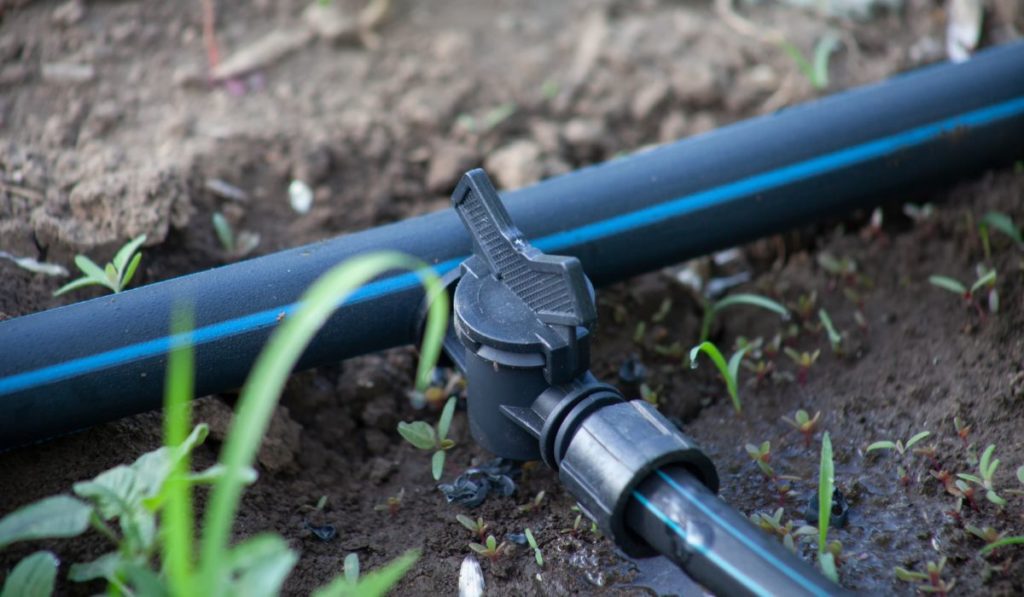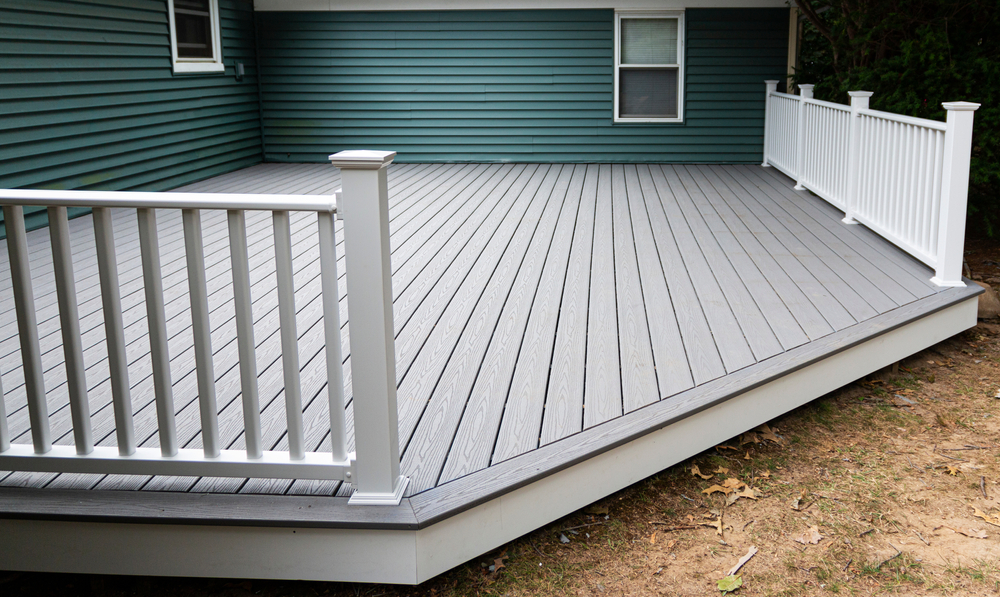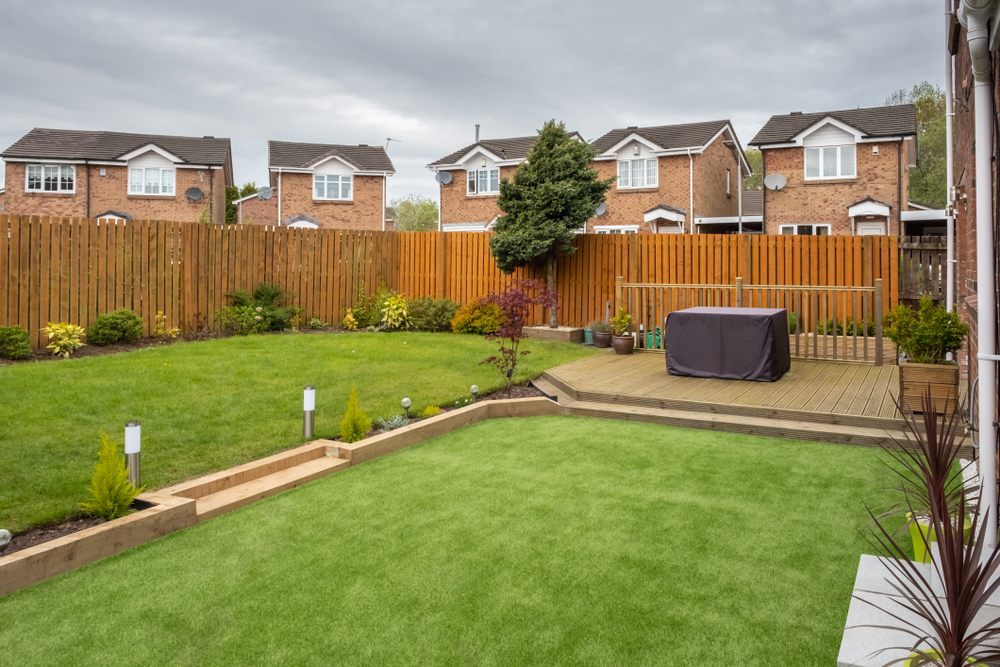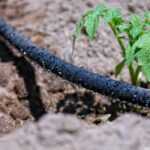Many people find it confusing to differentiate between drip tape and drip tubes. Although these two products work similarly — both come with evenly spaced drip emitters built internally into the pipes — they differ significantly in terms of application and material.
Whether to use drip tape or drip tubing depends on factors like the pressure demand and application of the system. Drip tape is a seasonal product that’s suitable for use on farms or fields with long, straight rows. Drip tubing, however, works best in your backyard and lasts for several years.
There are many different ways to deliver water to your plants, and choosing the right system for your needs can be tough. Let’s take a closer look at drip tape and drip tubing so that you can make the best possible choice.
What Is Drip Tape?

Drip tape (on Amazon) is a thin-walled pipeline that is made from collapsible polyethylene tubing. Typically, drip tapes have a wall thickness of 0.3 mm, 0.2 mm, and 0.15 mm. They lie flat on the ground when not in use, but when water flows through them, they swell up.
Drip tapes come with pre-installed emitters that are evenly spaced at 12-inches along their length. Generally, they have a water output of 0.4 gallons per minute for every 100 feet of tape. For instance, if you install 1,000 feet of drip tape in your garden, it will supply 4 gallons of water every minute along the entire system.
Drip tape is a more versatile product compared to the drip line and soaker hose. It’s free from a number of limitations that are typically associated with those tools. Although there are length limits when you use drip tape, they’re not as constrictive as drip lines and poly tubing.
You can use drip tape in longer lengths; however, the length depends on various factors, like inlet pressure, flow rate, size of the drip tape, and elevation changes. The emission uniformity rate is also affected by these factors.
The biggest limitation when using drip tape is the flow rate. Long lengths of drip tape can overtax the incoming flow rate. Another limitation of drip tape is its design. When water is supplied through drip tape, it becomes pressurized and loses its flexibility. That’s why it’s best to use drip tapes in straight lines.
What Is Drip Tubing?
Just like drip tape, drip tubes (on Amazon) also have emitters of different emission rates installed at regular intervals. However, this is where the similarities stop. Drip tubes, unlike drip tape, are limited in length. If you’re using a ¼-inch drip tube, make sure that it’s not longer than 30 feet in a single run, and a ½-inch drip tube shouldn’t be longer than 200 feet in a single run.
When it comes to flexibility, drip tubes have the advantage over drip tape. You can use a ¼-inch drip tube to easily make rings around trees to ensure even watering to the tree’s entire root system.
However, a ½-inch drip tube is less flexible than a ¼-inch one. Although you can maneuver a ½-inch tube around gentle bends and turns, it’s not able to cover 90 degrees angles or sharp angles without using a fitting.
Drip tubes are closed off using an end cap, which creates the pressure to force the water to drip out from the emitter points.
Which Method Is More Efficient?
Before answering this question, it’s important to understand that drip tape and drip tubes are two different methods that are useful in different applications.
So, in order to determine the efficiency of these methods, we first need to compare drip tapes and drip tubes with regard to their material, application, and longevity:
Application
Drip tapes are the go-to solution when it comes to watering crops grown in long, straight lines. This makes them ideal for large farms, commercial greenhouses, and vineyards. Drip tubes, meanwhile, are the preferred method of drip irrigation for home gardens.
Pressure
Drip tapes are typically used in low-flow and low-pressure applications, as they work optimally at 8-15 PSI (0.2 – 1.25 Bar). A pressure higher than this can cause the drip tapes to burst.
Drip tubes, on the other hand, come with non-compensated or pressure-compensated drip emitters. This means that they can operate in pressures varying from 15 to 60 PSI.
Construction
Drip tapes are thin-walled pipes. They are commonly available in varying wall thicknesses including 0.15 mm, 0.2 mm, and 0.3 mm. They lie flat upon application, but become enlarged once water is supplied to them.
Drip tubes are structured pipes. They commonly have a wall thickness of 0.9 mm to 1.2 mm.
Storage
As the drip tape lies flat when you’re not irrigating, you can easily recoil it for storage once the season ends. Drip tape typically comes in larger coils that measure between 1,000 and 3,000 m.
This ensures user convenience as you can use it for multiple applications. When rows deteriorate, you can simply run a new line from the coil supply.
Available in 100-400 m coils, drip tubes can’t be recoiled to store away.
Efficiency
It’s evident from the above comparison that both these products work efficiently under different circumstances. Drip tape is best used for low-pressure applications. It’s thinner, less expensive, and, in most cases, it may last only one season.
Drip tubes allow targeted watering of plants, which ensures healthier plants. Used in high-pressure applications, drip tubes have a long service life.
Which Is More Cost Effective?

Drip tapes are economical and easy to use. They can be used in both underground or subsurface installations, but they don’t have a long life. They are generally used for one season and then replaced in the next season. Their thin walls are susceptible to water pressures and damage caused by rats and other animals.
Drip tubes installed in your garden have a minimum life of 10 years. Although they are a bit expensive compared to drip tapes, you’ll be able to use them for a long time.
Which Method Lasts Longer?
Drip tapes can last from 1 to 5 years, depending on maintenance and care. They are commonly used in short-term crops like tomatoes, maize, potatoes, etc., and are removed after one season of harvesting.
Used in both long-term and short-term crops, drip tubes have a longer life and can last from 10 to 30 years.








